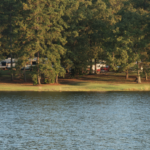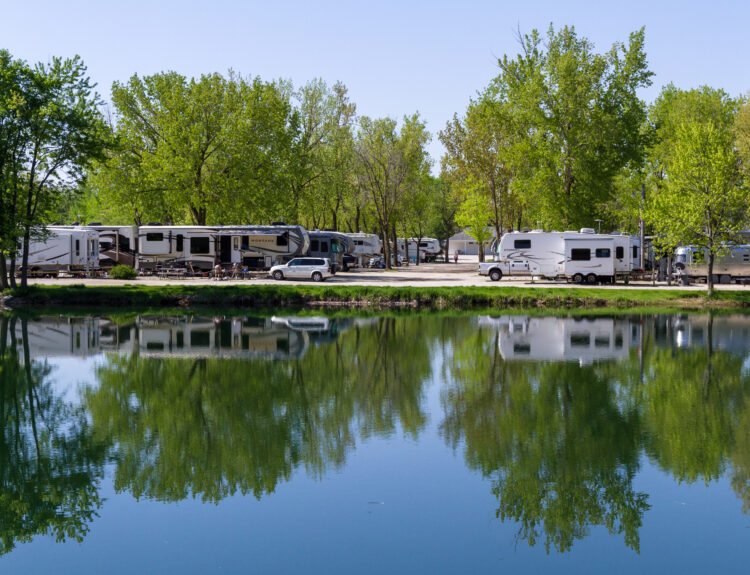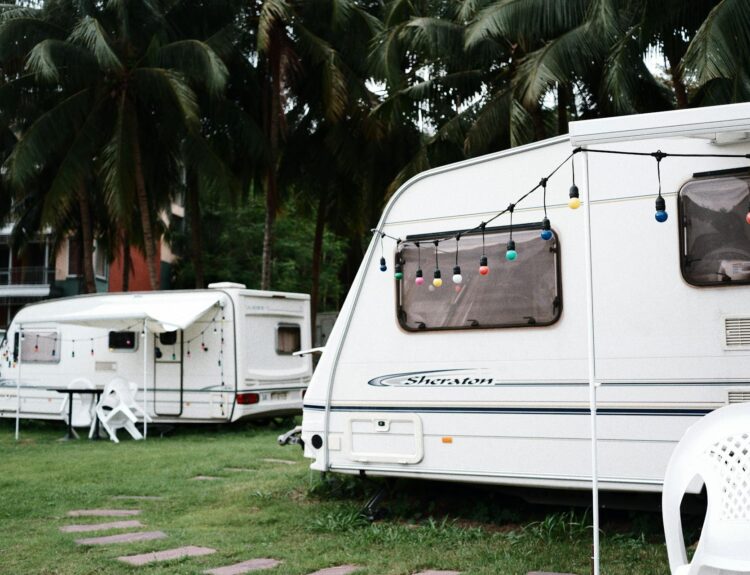In today’s digital age, internet access is no longer a luxury—it’s an expectation. Campers, whether they are weekend adventurers, digital nomads, or families on vacation, want to stay connected. For campground owners, providing reliable internet is no longer optional if they want to attract modern travelers.
However, offering internet in a remote outdoor setting comes with unique challenges. Rural locations often lack traditional broadband infrastructure, and wireless signals struggle with physical barriers like trees and hills. Bandwidth management is another major concern, as too many users on a weak network can lead to slow speeds and frustrated guests.
This is the ultimate guide to campground internet to explore the best solutions, how to set up and improve your network, and how to ensure a positive guest experience while maintaining cost efficiency.
Key Takeaways
- Reliable internet is now an essential amenity for campgrounds, attracting more guests and increasing revenue opportunities.
- Campground owners can choose from multiple internet solutions, including Tango Internet Solutions, Starlink, cellular hotspots, and fiber networks, based on location and budget.
- Bandwidth management and network security are crucial for maintaining fast and stable WiFi while preventing slow speeds and security risks.
- Offering tiered WiFi plans or renting mobile hotspots can help offset costs and create an additional revenue stream for campgrounds.
- A hybrid internet approach—combining satellite, cellular, and wired connections—ensures the best coverage and reliability for guests.

Camping with WiFi: A New Trend
The demand for WiFi at campgrounds has surged as more people bring work, entertainment, and digital devices on their trips. A growing number of campers expect access to the internet for navigation, social media, streaming, and even remote work. Campgrounds that offer reliable connectivity stand out in a competitive market, attracting a broader customer base, including families, long-term RV travelers, and remote workers.
Providing internet access has several advantages. It enhances guest safety by enabling emergency communication and real-time weather updates. It also improves the overall guest experience—campers can stream movies, use GPS for exploring, and share their adventures online. For digital nomads and long-term travelers, having strong WiFi is a deciding factor when choosing a campground.
However, there are potential downsides. Some campers seek nature to disconnect from technology, and the presence of WiFi might reduce the traditional outdoor experience. Additionally, poorly managed campground internet can lead to guest complaints if the connection is slow, unreliable, or overburdened. To avoid these pitfalls, campground owners must choose the right internet solutions and implement strategies for managing bandwidth and coverage.
Choosing the Right Campground Internet Solution
Campground owners must select an internet service that meets their park’s needs while balancing cost, coverage, and reliability. The best solution depends on factors like campground size, location, and the number of expected users.
Campground Internet Solutions
Providing reliable internet at a campground requires choosing the right service provider and network setup. Below are the best solutions available for different types of campgrounds.
Tango Internet Solutions
Tango Internet Solutions specializes in WiFi services designed specifically for campgrounds and outdoor resorts. Their systems are built to handle large numbers of simultaneous users while providing stable, high-speed internet.
Pros
- Designed for campgrounds – Unlike generic providers, Tango’s services cater specifically to outdoor hospitality businesses.
- Custom network solutions – Offers tailored plans based on campground size, terrain, and usage.
- Network management tools – Allows owners to set bandwidth limits, create guest login portals, and monitor usage.
- Reliable speeds – Reduces slowdowns during peak hours with commercial-grade equipment.
Cons
- Higher upfront costs – Installing a custom WiFi system can be expensive.
- Ongoing maintenance required – While Tango provides support, network monitoring is necessary.
- Dependent on existing infrastructure – Works best with fiber or broadband connections; remote areas may need additional solutions like Starlink.
If you operate a larger campground or an RV park with high internet demand, Tango is a great investment to ensure seamless connectivity.

Satellite Internet (Starlink)
For campgrounds in remote areas with limited broadband infrastructure, Starlink offers a game-changing solution. Unlike traditional satellite internet, Starlink provides faster speeds and lower latency, making it suitable for streaming, video calls, and general browsing.
Pros
- Works almost anywhere – Ideal for off-grid campgrounds where wired internet is unavailable.
- High-speed internet – Delivers speeds between 50-250 Mbps, significantly faster than legacy satellite services.
- Self-installation – Easy to set up with a simple dish and router.
Cons
- Expensive upfront costs – Equipment costs around $600, plus a monthly fee starting at $120.
- Weather-dependent – Performance can degrade in heavy rain or snowfall.
- Limited data prioritization – If your campground has many users, Starlink may experience slowdowns during peak times.
Starlink is a great option for campgrounds in remote locations, but it should be supplemented with additional network management tools if multiple users need to be supported.
Cellular-Based WiFi (4G LTE & 5G Hotspots)
Campgrounds near urban areas or major highways can use cellular-based WiFi. This method relies on 4G LTE or 5G networks and is accessible through mobile hotspots or routers with SIM cards.
Pros
- Affordable setup – No need for expensive infrastructure; a high-quality mobile hotspot or router can provide connectivity.
- Scalable – Campgrounds can offer mobile hotspots for rent or provide guests with information on the best plans.
- Good for small campgrounds – Suitable for sites with a lower number of guests needing connectivity.
Cons
- Coverage varies – If the campground is far from cell towers, signal strength may be weak.
- Limited bandwidth – Most cellular data plans have caps or slow down speeds after high usage.
- Network congestion – Performance depends on how many people are using the same cell towers in the area.
For campgrounds with decent cellular coverage, a combination of mobile hotspot devices and signal boosters can provide an affordable WiFi solution.

Wired Internet (Fiber or DSL)
If your campground is near a town or city, fiber or DSL internet is the best choice for fast and stable connectivity. Fiber-optic internet, in particular, offers the highest speeds and can handle heavy traffic with minimal slowdowns.
Pros
- Extremely fast speeds – Ideal for campgrounds with high demand for streaming, gaming, and video conferencing.
- Stable and reliable – Less affected by weather conditions compared to wireless or satellite solutions.
- Can be integrated with managed WiFi – Works well with services like Tango for large-scale internet distribution.
Cons
- Limited availability – Fiber and DSL are only available in certain areas.
- High installation costs – Running fiber-optic cables to a campground can be expensive.
- Not viable for remote locations – Only an option for campgrounds near urban centers.
For campgrounds in well-connected areas, fiber internet paired with a WiFi network management system can provide the best guest experience.
Hybrid Approach: Combining Multiple Solutions
The best campground internet solution often involves combining multiple services to maximize coverage and reliability. Here’s how:
- For remote campgrounds – Use Starlink as the main provider and cellular hotspots as backups.
- For large campgrounds – Install fiber or DSL if available and use Tango Internet Solutions for guest management.
- For small or budget-conscious campgrounds – Offer 4G/5G mobile hotspots and educate guests on the best personal hotspot options.
For guests who prefer their own internet connection, campground owners can enhance their experience by offering mobile internet recommendations and even renting out WiFi devices. This helps campers stay connected without overloading the campground network.
Mobile Internet Devices for Camping
Many campers bring their own mobile hotspots or satellite internet devices to ensure personal connectivity. Campground owners can enhance guest experiences by recommending top-rated devices:
Top-Rated Mobile Hotspots
- Verizon Jetpack MiFi 8800L – Great coverage, strong battery life, works on 4G LTE.
- Netgear Nighthawk M6 – A high-speed 5G hotspot ideal for heavy data use.
Best Satellite Internet Providers for Campers
- Starlink Roam – The best satellite internet option for remote locations.
- HughesNet Gen5 – A backup option with slower speeds but broad coverage.
WiFi-Enabled Camping Gadgets
- Signal boosters to improve weak mobile signals.
- Portable solar-powered routers for off-grid campers.
- Rugged WiFi modems that can withstand outdoor conditions.
Campground owners can stock some of these devices for rent or sale, providing additional revenue while helping guests stay connected.
While WiFi-enabled camping devices offer temporary solutions, optimizing the campground’s internet setup ensures a more seamless experience for all visitors. Here’s how to strengthen your campground’s WiFi for better speed and reliability.

Improving Campground Internet Connectivity
Even the best campground WiFi networks can face performance issues. Here’s how to improve internet speed and reliability:
Use Wi-Fi range extenders
Wi-Fi range extenders amplify and rebroadcast your existing signal, eliminating dead zones and expanding coverage across your campground. They are especially useful for reaching remote campsites, ensuring guests in every corner of your property stay connected. By strategically placing extenders halfway between the router and weak areas, you can enhance Wi-Fi accessibility without requiring major infrastructure changes.
When selecting an extender, match it to your router’s specs, opting for dual-band or tri-band models to prevent speed loss. Weather-resistant extenders are ideal for outdoor setups, and positioning is crucial—install them in locations with at least a moderate signal to effectively relay the connection. Proper use of range extenders can significantly improve guest satisfaction by providing consistent internet access across the campground.
Upgrade to a Higher Bandwidth Plan
If your Wi-Fi slows down when many guests are online, your current bandwidth may be insufficient. A higher-bandwidth plan increases the overall capacity of your network, preventing slowdowns during peak hours. Many campgrounds still rely on outdated internet plans, leading to buffering and lag when multiple users attempt to stream, browse, or work online.
To determine if an upgrade is needed, check provider data usage reports and conduct speed tests during busy hours. For modern campgrounds, a minimum of 100 Mbps is often necessary, while those with heavy streaming or work-from-anywhere guests may need even higher speeds. Unlimited data plans are ideal to prevent throttling, ensuring smooth performance throughout the month.
Implement Network Management Tools
Even with high bandwidth, certain users or activities can consume disproportionate amounts of data, slowing down others. Network management tools help prioritize essential tasks like browsing and work-related applications over bandwidth-heavy activities like video streaming. Features such as Quality of Service (QoS) allow you to allocate bandwidth efficiently, preventing a few users from dominating the network.
Many modern routers offer built-in management settings, while advanced options like Ubiquiti UniFi or TP-Link Omada provide detailed controls over network traffic. Setting per-user speed limits or prioritizing guest traffic separately from business operations ensures fair access for all. Implementing these tools can dramatically improve network stability and minimize guest complaints about slow Wi-Fi.
Encourage guests to use Ethernet connections
Wired Ethernet connections provide a more stable and faster internet experience compared to Wi-Fi, which is prone to interference and signal degradation over distance. Campgrounds catering to remote workers or long-term guests can benefit from offering Ethernet access in common areas or designated workspaces, ensuring reliable connectivity for video calls and large file transfers.
To facilitate Ethernet use, consider installing wired connections in lounge areas, business centers, or even select RV sites. Providing Ethernet cables for rent or loan at the front desk can also be a simple yet effective solution. Encouraging guests to use wired connections reduces strain on the Wi-Fi network, improving overall performance for all users.
Campgrounds catering to digital nomads need to offer high-speed, stable internet to attract long-term guests. Many nomads rely on uninterrupted connectivity for work, making strong WiFi a priority.
Digital Nomad Camping
Campground owners can appeal to digital nomads by:
- Providing a designated work-friendly area with strong internet access.
- Offering flexible, high-speed WiFi plans with unlimited data.
- Listing WiFi speeds on booking websites to attract remote workers.
Additionally, offline-friendly camping apps, such as maps, weather trackers, and trip planners, can be recommended to guests when they venture into areas with limited service.
Frequently Asked Questions
1. How do I improve internet connectivity in remote camping areas?
Enhancing the internet in remote areas requires high-gain antennas, Wi-Fi mesh networks, or satellite internet like Starlink. Signal boosters and proper network management also help maintain stable connections for campers.
2. How can I set up a portable Wi-Fi network at a campsite?
Start with a reliable mobile hotspot like the Verizon Jetpack or Netgear Nighthawk. Choose a strong data plan, position the device in a high-reception area, and use Wi-Fi extenders to improve coverage in larger campgrounds.
3. How can I get a better Wi-Fi signal in my campground?
Upgrading to commercial-grade routers, using Wi-Fi mesh systems, and strategically placing access points improve coverage. Managing bandwidth and updating firmware regularly ensures a stable and efficient connection.
6. How can I ensure network security in a campground Wi-Fi setup?
Using WPA3 encryption, setting up a guest network, updating firmware, and implementing firewalls enhance security. Educating campers on best practices, such as using VPNs, adds extra protection.
7. What are the cost considerations for implementing campground internet?
The initial investment includes routers, access points, and network setup, ranging from $700 to $1,300 per unit. ISP fees vary, with high-speed fiber-optic connections costing up to $50,000 per year. Ongoing maintenance is essential for firmware updates, repairs, and network expansions. To offset costs, many campgrounds offer tiered Wi-Fi plans, charging guests $5 per night for premium access or including fees in site rentals.






